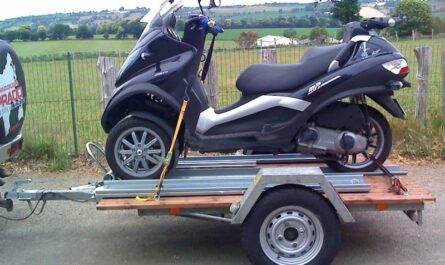The scooter fuel supply chain includes, but is not limited to, the tank, tank valve, fuel filter and carburetor or injector depending on the type of engine. On this circuit, we can see gasoline flowing from anywhere, because these organs are subject to wear over time. For safety reasons, the objective is to clearly locate the point of the leak to avoid accidents.
Scooters - general information
Here is an article that serves as a guide and helps you choose your scooter better before purchasing. For this, we give you the details on the characteristics and the different types of scooter.
Scooter gasoline flowing through the tank
Leaks found in the tank of the scooter can be observed in various places. Leaking gasoline can be seen on a steel tank rusted by a chemical oxidation-reduction reaction. In other words, rust destroys the steel wall of the tank by a reaction between steel, air and water. Due to rust, the thickness of the tank wall becomes very thin or even disappears. Holes then form on the steel tank attacked by rust. These holes are thus favorable to the flowing gasoline. Replacing the tank is the solution. Note that synthetic material tanks do not experience this problem and prove to be more reliable over time.
Scooter gasoline flowing at the fuel cap
The cap and the fuel filler flap are accessories of the tank. Their function is to allow the tank to be supplied with gasoline when opening. By closing, their function is to protect the tank from dirt. These accessories constitute wear items and must be serviced periodically to ensure the safety of the scooter and its user. Gasoline can also leak around the fuel filler cap or filler flap due to the broken gasket leaking gasoline. In some cases, gasoline can also leak from the locks of the caps and the fuel filler flap. This phenomenon is explained by the wear of the locks due to the regular actuation of them to fill the gas tank when going to a service station. To remedy this, simply replace the worn fuel filler cap or hatch with a new one.
Scooter gasoline flowing through the gasoline tap
The fuel tap is a mechanical device operated by hand and which allows the flow of fuel to be regulated or stopped. It is more generally located in the tank or just after. The fuel tap has three operating modes. The first mode is used to stop the flow of gasoline when the quantity of the latter has reached a critical threshold. In this case, the engine will stall or stop due to a lack of fuel. The second mode is the logical continuation of the first because the tap reopens to allow the scooter to continue the road on the minimum reserve of gasoline to reach the nearest gas station.
And, finally, the third mode cuts off the fuel supply for safety reasons. In some scooter models, the fuel tap incorporates a disposable fuel filter. The seal between the fuel tap and the tank is ensured by a rubber seal. An improperly mounted fuel tap thus causes fuel to leak. Hence the interest in screwing this valve properly or replacing it if it is worn.
Gasoline flowing through the carburetor
The carburetor is a mechanical organ which doses the mixture of air and gasoline. It receives fuel from the tank by the principle of center of gravity. Then, the carburetor thus injects the air / gasoline mixture by the principle of depression towards the cylinder or cylinders of the engine. The exact quantity of gasoline to be mixed with air and then to be injected into the engine is regulated by a float, by the needle, by the jets and by the gas butterfly valve. Since the carburetor is a component that can be dismantled at various points, a seal is inserted between the tank and the body of the carburetor to prevent gasoline from flowing into it.
Sinking scooter gasoline: other reasons
The function of the float is to dose the exact quantity of gasoline to be stored in the tank of the carburetor. This float acts on a needle which is in a way the fuel valve of the carburetor. The principle is that the gasoline arrives by a cylindrical pipe where a needle slides. When the needle is open, it allows gasoline to pass into the tank tank. When this tank is full, the float rises to lock the needle in its closed position. In this case, the flow of gasoline is cut off. However, it turns out that gasoline is leaking from the carburetor through an overflow, because the float or needle is faulty. In this case, it suffices to twist the tab which is integral with the float so that it can correctly adjust the flow of fuel by completely closing the needle if the exact stock of fuel in the tank is sufficient.
Our recommended products:
Here is a selection of some scooter parts and components that may interest you.




